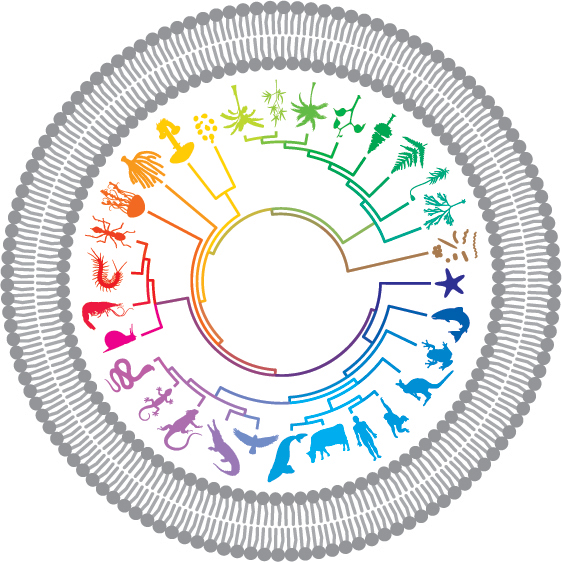 There is a nursery rhyme that goes:
There is a nursery rhyme that goes:
“Big fleas have little fleas
Upon their backs to bite ’em,
And little fleas have lesser fleas,
And so ad infinitum.”
A fine natural illustration of this principle can be found in the pea aphid Acyrthosiphon pisum, which is infected by a bacterial endosymbiont Hamiltonella defensa, which is in turn infected by the bacteriophage APSE. Only there’s no ad infinitum here – instead, there’s an evolutionary arms race the latest twist in whose story has just been published by Kerry Oliver and colleagues in BMC Biology.
A. pisum, as well as being host to endosymbiotic H. defensa, is also parasitized by the wasp Aphidius ervi, which engages in the gruesome practice of laying eggs in living hosts. This is, as one might imagine, usually terminal for the host, but it’s also where the symbionts come in. When aphids contain symbiotic H. defensa, and those H. defensa contain APSE, the developing wasps are killed and the aphids are saved from an awful fate. This latest study shows that the wasps can fight back: the authors investigated the effects of wasps’ laying multiple eggs in the same aphid (known as “superparasitism”) and found that it’s an effective way to overcome the protection which symbionts confer – probably due to the extra dose of virulence factors which accompany each egg. The more interesting result, however, was that wasps are capable of detecting which aphids have endosymbionts and altering their parasitism strategy accordingly: they’ll tend to lay only a single egg in unprotected aphids, but multiple eggs in those protected by H. defensa. Quite how wasps determine the difference between the two isn’t clear. The authors suggest that they may literally “sniff out” protected aphids, which produce less of a certain alarm pheromone than do unprotected aphids, but whether this is actually the case remains to be seen.
The co-evolutionary “arms race” between hosts and parasites is oft-discussed: indeed, artificial laboratory co-evolution of these very species has been shown to result in increased wasp virulence. This study serves as a reminder that behavioral and biochemical adaptations are all part of the same conflict – and that behavior allows on-the-fly (as it were) adjustments that biochemistry might not.
Kester Jarvis
Latest posts by Kester Jarvis (see all)
- The agony of choice: conservation biology and choosing what to save - 18th March 2014
- Sigma factor networking and bacterial versatility - 30th January 2014
- Electricity generation and fish populations: how a power station provided a rich biological dataset - 4th September 2013
Comments